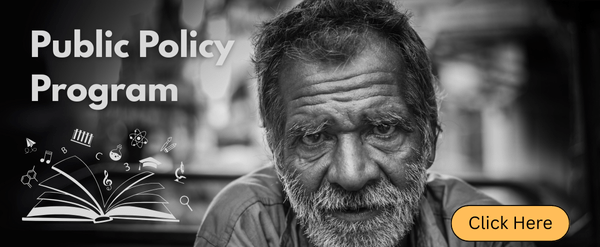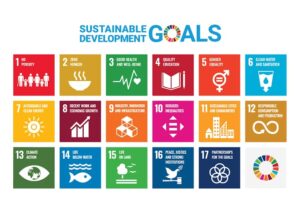Intersectionality in Indian Politics: Beyond Age and Gender Anmol Yadav, Nandini Singh & Divyasri S N 1.Introduction By Anmol Yadav A crucial perspective for comprehending how caste, class, age, gender, and other characteristics interacting to influence political inclusion in India is intersectionality. This chapter compares the advantages enjoyed by others with the exacerbated obstacles encountered by marginalized groups, such as young women from underprivileged castes or rural areas. It draws attention to the systemic difficulties and achievements of people negotiating these intersections through case studies and historical research. The chapter examines present policies, highlighting their inadequacies in dealing with the complexities of crossing identities, and advocates for a more integrated approach to policy making. Intersectionality-based quotas, capacity-building efforts, and increased data collecting are among the recommendations for promoting inclusive government. Moving beyond isolated issues of youth and gender, this chapter advocates for a comprehensive framework that promotes equal representation and guarantees that India’s political system reflects its population’s variety. 2.Defining Intersectionality By Anmol Yadav The term “intersectionality” coined by Kimberlé Crenshaw describes how overlapping social identities result in distinct experiences of privilege or disadvantage. Intersectionality is very important in India, as caste, religion, gender, class, and geography all influence society. Just as young tribal men face different hurdles than urban youth, Dalit women face different political obstacles than upper-caste women. By providing insights into systemic disparities, intersectionality aids in the dissection of these overlapping inequalities. It finds chances for alliances and group efforts in addition to examining marginalization. By incorporating intersectionality into Indian politics, officials may promote inclusive representation and address the underlying causes of inequality. 3.Understanding Intersectionality in Indian Politics By Anmol Yadav 3.1 Historical Perspective Since the independence movement brought disparate groups together, intersectional identities have developed in Indian politics. While individuals like Jawaharlal Nehru and Mahatma Gandhi promoted an inclusive worldview, leaders like B.R. Ambedkar tackled caste-based inequality in addition to colonial tyranny. Women, Dalits, Muslims, and tribal people made substantial contributions while being marginalized in popular narratives; figures such as Sarojini Naidu, Begum Rokeya, and Ambedkar brought attention to the interaction of caste, class, gender, and religion. Demands for linguistic and cultural recognition led to the linguistic restructuring of states in 1956, which was a turning point in identity politics. Caste and class dynamics interacted with regionalism, as seen by statehood movements in Gujarat, Maharashtra, and Andhra Pradesh. Crucial events highlighted the links between caste and class, such as the Mandal Commission’s recommendations for OBC reservations in the 1980s. Similarly, the 1985 Shah Bano case brought attention to the linkages of religion and gender in political discourse. These instances show how caste, gender, and religion have a significant impact on Indian politics. 3.2 Theoretical Framework Kimberlé Crenshaw’s introduction of the idea of intersectionality offers a useful prism through which to examine the overlapping and interconnected systems of privilege and discrimination. Ambedkar’s views on gender and caste in India are highly relevant to intersectional research. Caste, according to Ambedkar, was a system of gradated inequality that afflicted women and Dalits in diverse ways. Additionally, intersectionality is consistent with feminist ideas that challenge gender-based inequalities and Marxist theories that tackle class injustice. Scholars such as Gopal Guru, Kancha Ilaiah, and Uma Chakravarti have developed similar frameworks in India, looking at the ways that gender, caste, and class interact to influence the lived experiences of marginalized groups. Guru’s idea of “Dalit women’s standpoint” draws attention to the unique difficulties that Dalit women encounter as a result of being marginalized in both patriarchal and caste systems. The ability of intersectionality to examine the interactions between many identities within the socio-political environment makes it applicable to comprehending Indian political systems. REFERENCES Intersectionality and Political Mobilization: Exploring How Gender Intersects with Other Identities, such as Ethnicity, Religion, and Economics Psychology of Intersectionality of Gender as Well as Other Forms of Identity: Obstacles and Dilemmas Confronting Women’s Participation in Policy Making-Vandana Singh Electing Women in Ethnically Divided Societies: Candidates, Campaigns, and Intersectionality in Bihar, India Mapping the Margins: Intersectionality, Identity Politics, and Violence Against Women of Color- Kimberle Crenshaw “Intersectionality in Practice: Reflecting on India’s Affirmative Action Policies” by Surinder Jodhka in Economic and Political Weekly (EPW). 4. Contemporary Relevance of Intersectionality in Politics By Nandini Singh 4.1. Case Studies of Political Leaders Several political leaders in India embody the principles of intersectionality, challenging multiple axes of marginalization. Mayawati, a Dalit woman leader, redefined political power structures as the four-time Chief Minister of Uttar Pradesh. Chandrashekhar Azad, the leader of the Bhim Army, has emerged as a voice for Dalit rights while aligning with broader issues of constitutional democracy and social justice. Grace Banu, a Dalit transgender activist, challenges systemic exclusion through advocacy for transgender rights. Her political engagement highlights how caste and gender identity compound discrimination, reinforcing the need for inclusive policy making. 4.2. Discussion (Palanithurai, 2005) Studies have shown that female political representatives are more concerned with social issues such as health, poverty alleviation, community development, and family welfare. Gender equality is an essential element for the sustainable progress of any nation. The goal of all- round development of the nation can be achieved only by ensuring the equal participation of both genders in various fields. In India, women are worshiped as goddesses and on the other hand, they are discriminated against. If seen, the root cause of gender inequality in Indian society lies in the patriarchal system. Eminent sociologist Sylvia Walby studied the patriarchal system prevalent in Indian society, stating that “Patriarchalism in the process and system of social structure in which man dominates, oppresses and exploits women”. The exploitation of women due to gender differences is an age-old cultural phenomenon of Indian society. The patriarchal system in the society has gained its legitimacy and acceptance from our religious beliefs, be it Hindu, Muslim or any other religion. Gender-based discrimination is widespread in India. Here, from birth to death, from education to employment, from family to political level,











